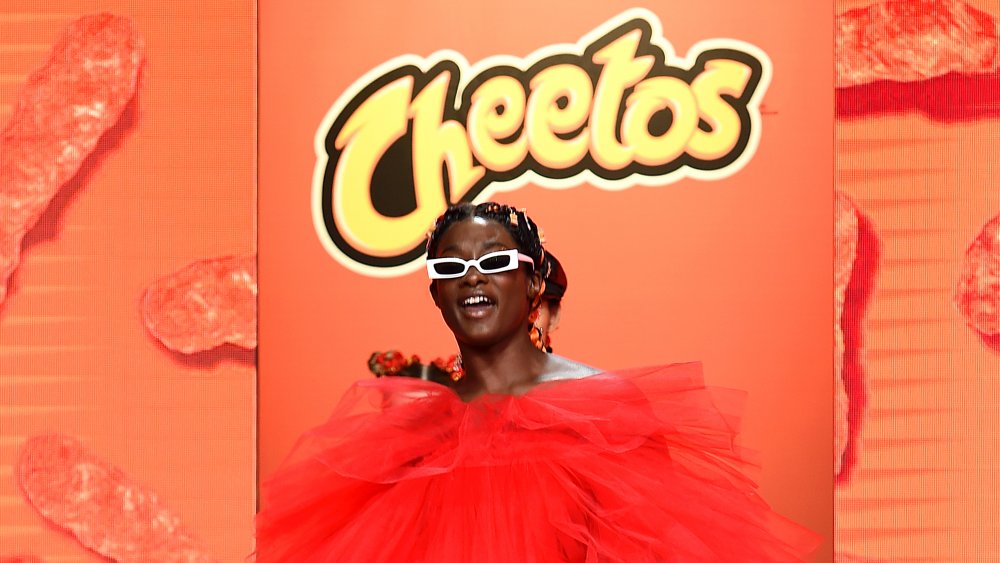Nutritionist Explains Why Cheetos Are So Addictive
"Oh, I'll just have one or two Cheetos," you think to yourself, demurely plucking a few crunchy puffs from a freshly opened bag. But before you know it, the bag is empty and you're stuck with orange-tinged fingers and there's the stink of cheese dust under your nails. Not only that: you could easily eat more. Why is that? Nutritionist, chef and food writer Robin Miller spoke with The List about the science behind the addictiveness of this popular snack.
"It's hard to resist the crisp, cheesy crunch of a Cheeto," Miller empathized. "There's the initial snap, followed by the layer of salt, the puff of cheese, and the buttery-rich fat that melts on the tongue. With each bite, the brain is rewarded with instant feelings of pleasure. It's difficult to stop; and that's exactly what food manufacturers strive for."
In fact, a 2013 New York Times Magazine investigation found that Frito-Lay — manufacturer of Cheetos — spent up to $30 million a year employing nearly 500 chemists, psychologists, and technicians to attain the perfect degree of crunchiness, aroma, and "mouth feel." According to Miller, their mission was accomplished: "Cheetos melt in our mouths almost immediately, tricking our brains into thinking we haven't eaten much. Problem is, once you get to the bottom of the bag — and feel mildly bloated and thirsty — you realize the calories, fat and salt didn't vanish after all," she told The List.
All the reasons why Cheetos are addictive
That melt-in-your-mouth sensation is only part of the reason why you can't just eat a few Cheetos, Miller explained. Even though the brand gives some of its flavors flamboyant names like "Crunchy Cheddar Jalapeno" and "Crunchy FLAMIN' HOT Cheese," compared to a food that actually contains diced fresh jalapeño, even the spiciest of Cheetos is going to taste rather bland. This is yet another reason why you can't eat just one, she explained. "Highly-seasoned snacks tend to satiate us sooner, while bland foods quell the temptation to overdo it," Miller said. "Have you noticed that there's not one powerful or distinct flavor of a Cheeto? We need to keep eating them to figure it out."
In addition, Cheetos contains a specific additive known to enhance snack food's addictiveness, Miller said. MSG (monosodium glutamate) — we're looking at you! This additive is a purified form of "naturally occurring glutamate — with sodium added for stability," Miller explained, adding: "Glutamate is an amino acid found in all protein-containing foods — cheese, meat, mushrooms — and it's responsible for delivering that prized savory flavor, also called umami or 5th sense." But, interestingly enough, MSG itself doesn't contain flavor, Miller noted. "It activates the glutamate receptors in our taste buds, making food taste more delicious. I do wonder what the Cheeto would taste like without it."
Cheetos are indeed so addictive that, even though Miller is an expert on all of the reasons why this snack food is a slippery slope to overeating, she herself has been caught orange-handed. "I have a bag of Cheetos in my pantry right now," she admitted.

